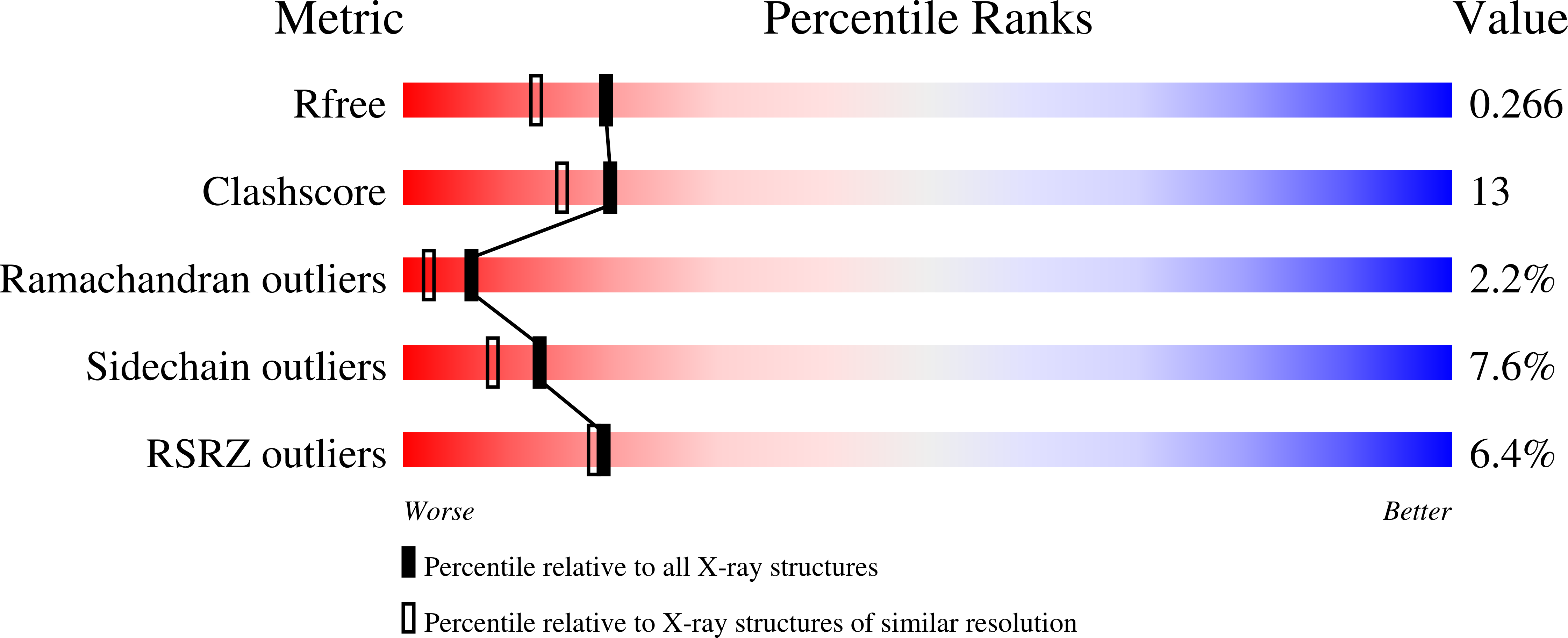Structure and Function of the XpsE N-Terminal Domain, an Essential Component of the Xanthomonas campestris Type II Secretion System
Chen, Y., Shiue, S.-J., Huang, C.-W., Chang, J.-L., Chien, Y.-L., Hu, N.-T., Chan, N.-L.(2005) J Biol Chem 280: 42356-42363
- PubMed: 16162504
- DOI: https://doi.org/10.1074/jbc.M506843200
- Primary Citation of Related Structures:
2D27, 2D28 - PubMed Abstract:
Secretion of fully folded extracellular proteins across the outer membrane of Gram-negative bacteria is mainly assisted by the ATP-dependent type II secretion system (T2SS). Depending on species, 12-15 proteins are usually required for the function of T2SS by forming a trans-envelope multiprotein secretion complex. Here we report crystal structures of an essential component of the Xanthomonas campestris T2SS, the 21-kDa N-terminal domain of cytosolic secretion ATPase XpsE (XpsEN), in two conformational states. By mediating interaction between XpsE and the cytoplasmic membrane protein XpsL, XpsEN anchors XpsE to the membrane-associated secretion complex to allow the coupling between ATP utilization and exoprotein secretion. The structure of XpsEN observed in crystal form P4(3)2(1)2 is composed of a 90-residue alpha/beta sandwich core domain capped by a 62-residue N-terminal helical region. The core domain exhibits structural similarity with the NifU-like domain, suggesting that XpsE(N) may be involved in the regulation of XpsE ATPase activity. Surprisingly, although a similar core domain structure was observed in crystal form I4(1)22, the N-terminal 36 residues of the helical region undergo a large structural rearrangement. Deletion analysis indicates that these residues are required for exoprotein secretion by mediating the XpsE/XpsL interaction. Site-directed mutagenesis study further suggests the more compact conformation observed in the P4(3)2(1)2 crystal likely represents the XpsL binding-competent state. Based on these findings, we speculate that XpsE might function in T2SS by cycling between two conformational states. As a closely related protein to XpsE, secretion ATPase PilB may function similarly in the type IV pilus assembly.
Organizational Affiliation:
Institute of Biochemistry, College of Life Sciences, National Chung Hsing University, Taichung City 402, Taiwan.


















